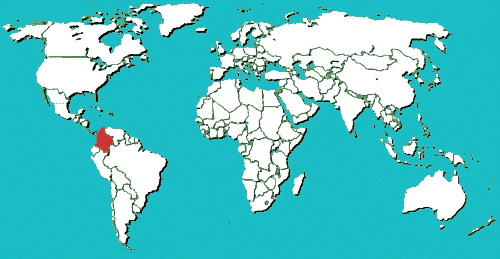
Circle the area on this map

C. While the government says its efforts have cut coca leaf production by 60 percent since 2000, Colombia still is a major source of the plants used to make cocaine. Rebels have collected millions of dollars from traffickers filling the soaring U.S. demand for illegal drugs.
B. After Colombia rejected a deal with the United States to build a canal across the isthmus of Panama, U.S. President Theodore Roosevelt promised to support Panama's separatist movement. With help from the U.S. Navy, Panama gained its independence and the U.S. got its canal.
C. A dry canal could make Colombia a hub where imported Chinese goods would be assembled for re-export throughout the Americas and Latin American raw materials would begin the return journey to China.
D. Mestizos (people of mixed European and Native American descent) account for 58 percent of Colombians. Another 20 percent are white (European), 14 percent are mulatto (mixed African and European), 4 percent are black (African), 3 percent are mixed African and American Indian and 1 percent are Native American.